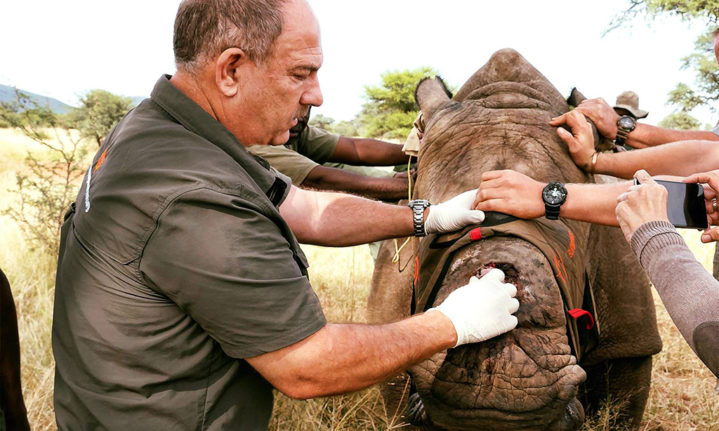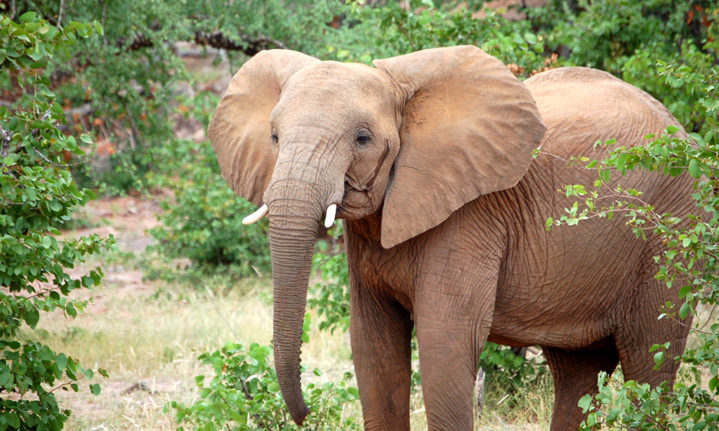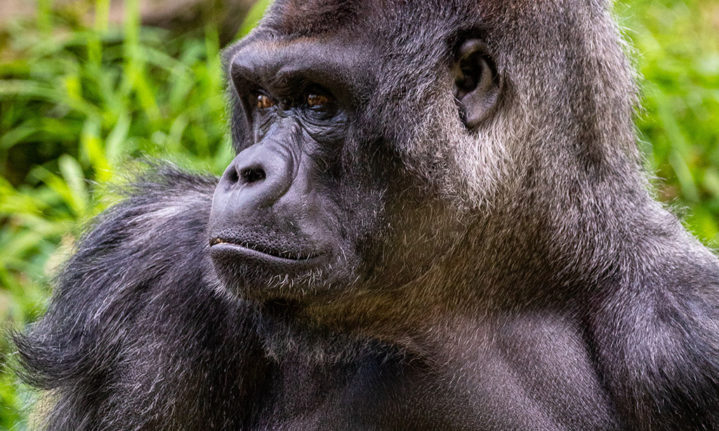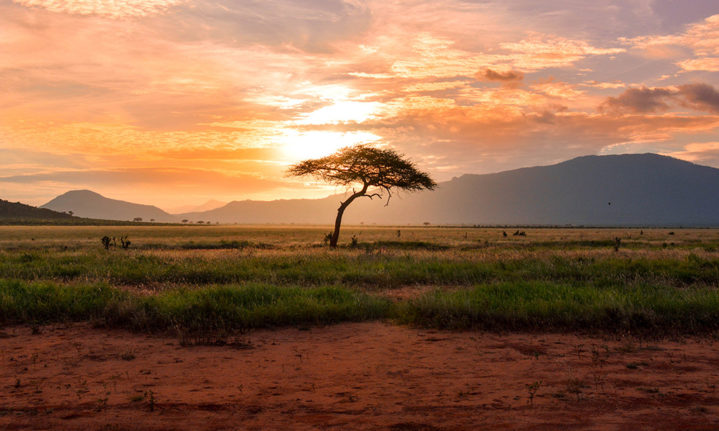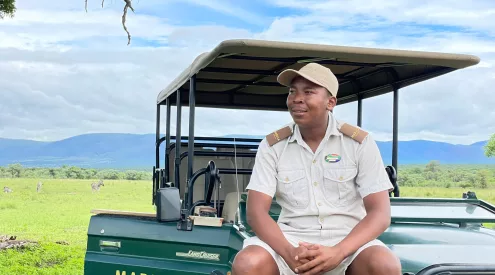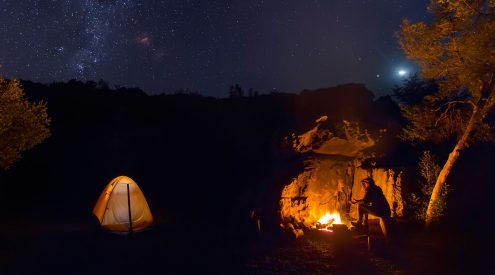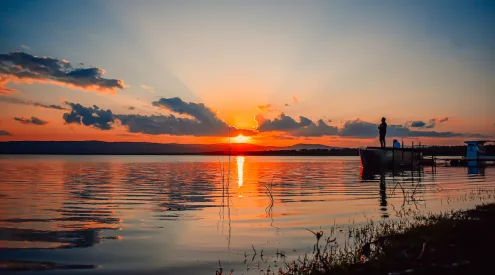Wildlife vet Dr Johan Marais has spent his life travelling across Africa saving the ‘unsaveable’. Protection is his watchword.
Interviewed by Graeme Green of the New Big 5
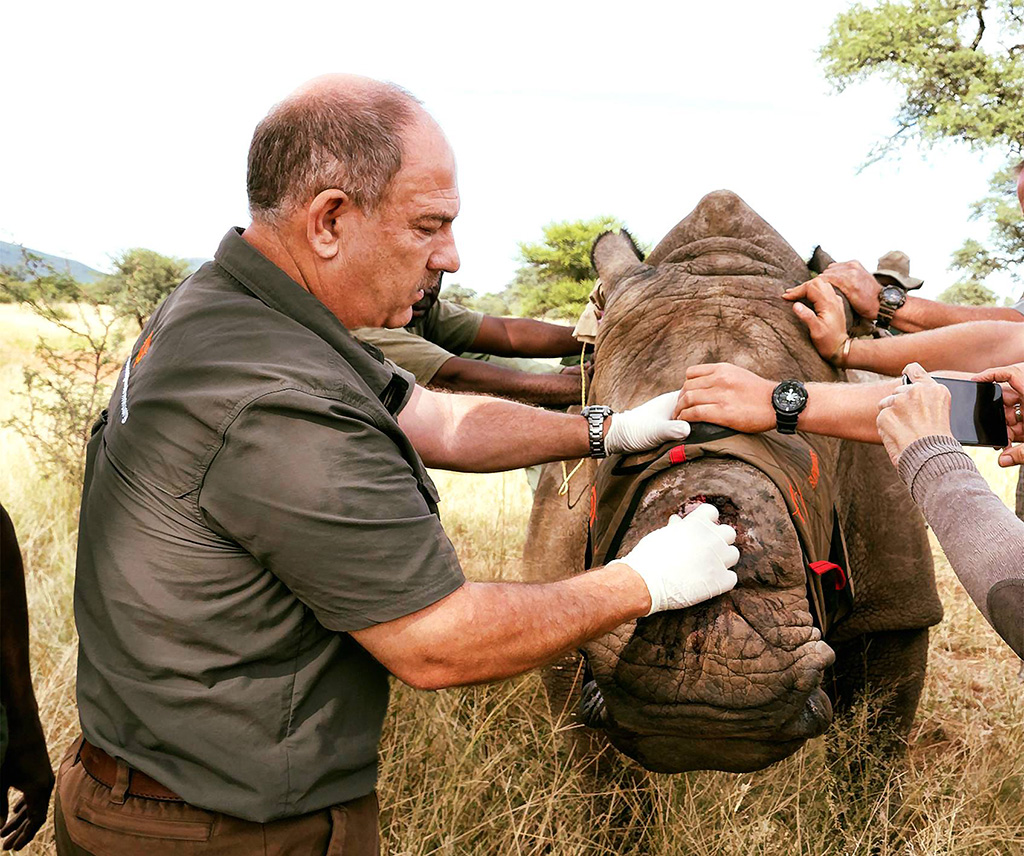
‘I like a challenge,’ says Dr Johan Marais, wildlife vet and founder of wildlife charity Saving The Survivors. His chosen career has been full of challenges. The organisation – which he founded – is dedicated to treating wild animals with serious injuries, such as facial wounds (from horns that have been hacked off by poachers), fractures and gunshot wounds. No one else was really doing this work before, so treating these injuries on such massive, powerful animals was uncharted water.
Marais trained as a veterinary surgeon in the early 1990s and has since travelled across southern, east and central Africa, not just helping animals, but also following his passion for wildlife photography.
His life’s mission is to make sure these animals are still around for the next generation of wildlife lovers and photographers.
I grew up with wildlife. My father was a game ranger in Etosha National Park in Namibia. I have clear memories from very young of riding on a little white rhino, an orphan, and also giving bottles to lion cubs that my father found, when the mother was dead. Spending time with my father, and growing up in a little camp called Okaukuejo kickstarted my love for wildlife and for veterinary science. My father’s work put in my mind the importance of protecting wildlife.
I set up Saving The Survivors in 2012. Who else was going to do this work? We were losing hundreds of rhinos each year. There wasn’t a lot being done to try to save animals that had been poached, where their horns were hacked off, or with fractures and gunshot wounds. I decided to treat them.
This type of work had never been done. We didn’t walk in to treat a fracture and say: ‘Let’s do A, B and C,’ and it worked. To treat fractures successfully took me eight to 12 months. I had to work out how to treat the wounds, or what sort of plaster works. We also had to see what pain-killers or antibiotics to use. I was shocked to see how little information there was available. I’ve always liked challenges. In a weird way, I quite enjoy this work, trying new things to see if I can get it right and to see what can be done for these animals.
We’re most active in South Africa but we do consultancy work in Mozambique, Botswana, Namibia, Zimbabwe and Kenya. The most common injuries we see in rhino are facial wounds, gunshot wounds and fractures. In other wildlife, such as lion, buffalo, cheetah and wild dogs, we also work on injuries such as snare wounds or wounds from other animals.
Some people might not see the value in the work we do, but it needs to be done. We can’t wait for rhino numbers to get lower and lower. Look at Tundi, a white rhino we treated and saved. She’s already had four calves. So we didn’t save just one animal, we saved five. There’s a knock-on effect.
The emotional effect of this work doesn’t get better with time. It’s a deeply emotional experience to see animals suffering. It’s something we underestimate and don’t talk about enough. I’m talking about veterinarians, helicopter pilots, game rangers, anti-poaching people, and owners. I personally know at least two veterinarians, who treat a fair amount of rhino, who suffer from post-traumatic stress disorder. Most vets who do this work suffer from this. It doesn’t get the attention it should.
I don’t think rhinos will become extinct. I expect private game reserves and private owners will protect them. But why do we want to see a species go from 23 000 to 12 000 animals? We’ve already halved the white rhino population worldwide. People in Kruger say that 10 years ago, they saw rhino every day, but now they might see one in a week. That’s criminal. You want our kids and their kids to see leopard and rhinos and ellies and antelope. You want to go out into wild open African plains and see rhino, and not just see them in fenced areas.
Photography is my main hobby. I have such a passion for 100-pounder elephants. I’ve mainly photographed them from vehicles but to be on foot with these bulls – as I’ve done with Tim from Kenya, that recently died – is a life-changing experience. They’re such an impressive animal to spend time with. I could do that for weeks on end, just taking photos.
What’s upsetting is knowing there’s so much more we can do to conserve wildlife but we choose to spend our money on, for instance, going to Mars. Just imagine what that could do for nature conservation, or for people who are hungry or don’t have water or don’t have houses. We spend money destroying our own planet and spend money travelling to other planets. It doesn’t make sense to me.
savingthesurvivors.org
Johan’s top 5 national parks and reserves to visit in Africa
1. Tsavo National Park in Kenya is probably my favourite national park. I have a big passion for 100-pounder elephant bulls, the big tuskers, and that is one park in the world with probably the highest concentration of those elephants. They’re such incredible animals.
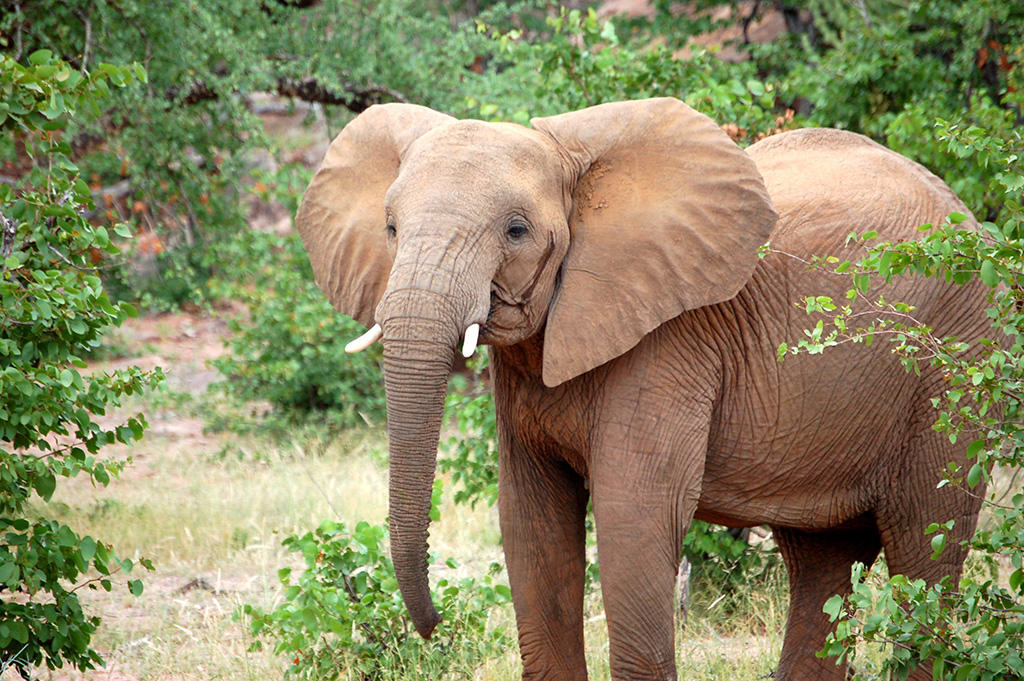
2. Dzanga-Sangha National Park in the Central African Republic is a very, very special place. It lies in the middle of the rainforest, in a little V between Cameroon and the Congo. If you want to see forest elephants and western lowland gorillas, that’s the place to go.
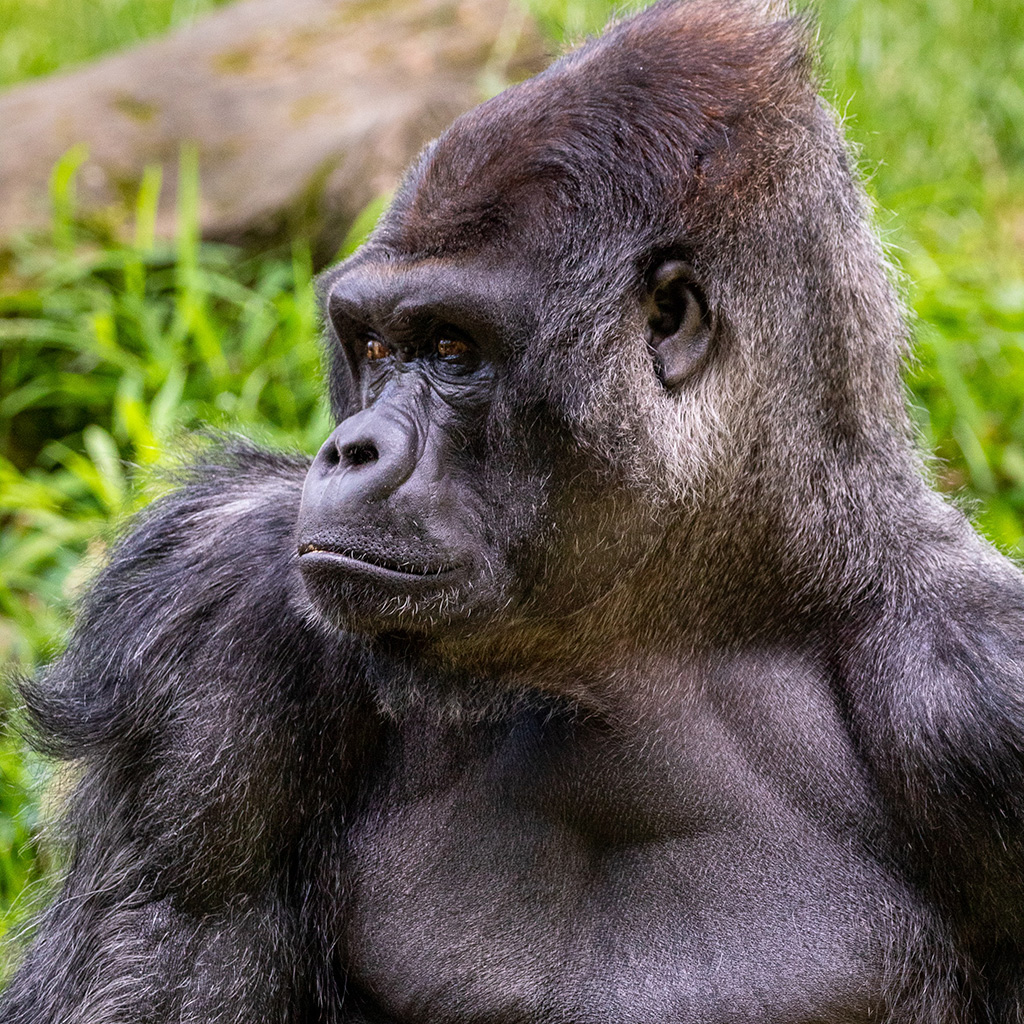
3. Ngorongoro Crater in Tanzania is a very special park. It’s a stunning setting. You also get big bulls there, as well as rhino, lions, buffalo… It’s a wide open system, with no fences, and it’s stunning to see 20 000 to 30 000 wild animals in that crater.
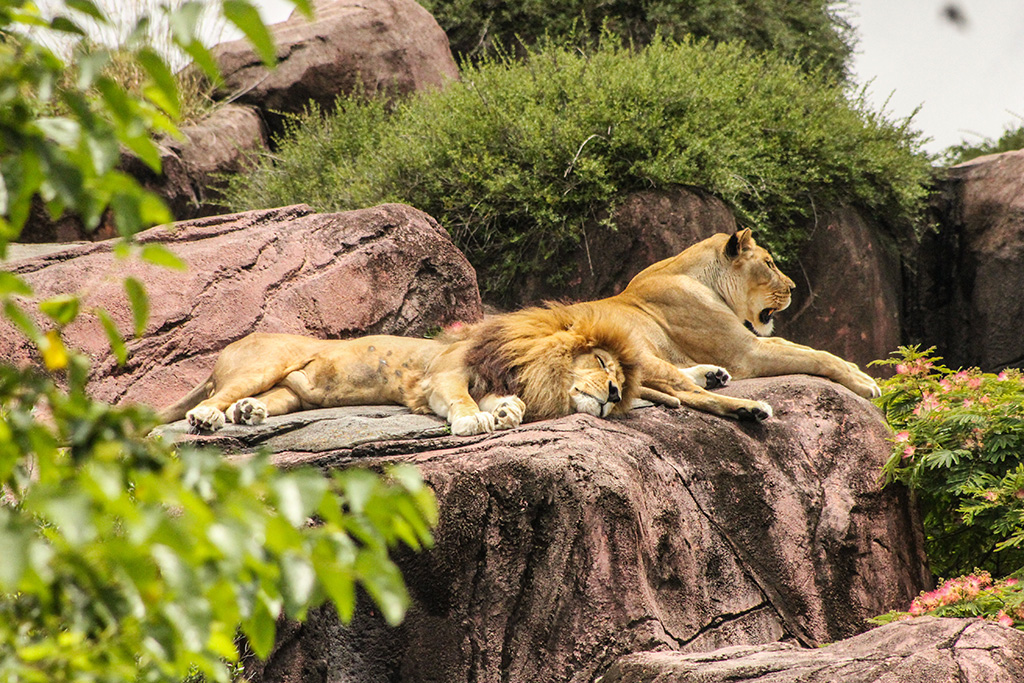
4. Lewa Downs in the middle of Kenya is a remarkable place. It has a similar feeling to Amboseli, with Mount Kenya and the marshes. But what makes it stand out is you see white and black rhino, almost next to each other, in this open savannah, which is really difficult to see anywhere else.
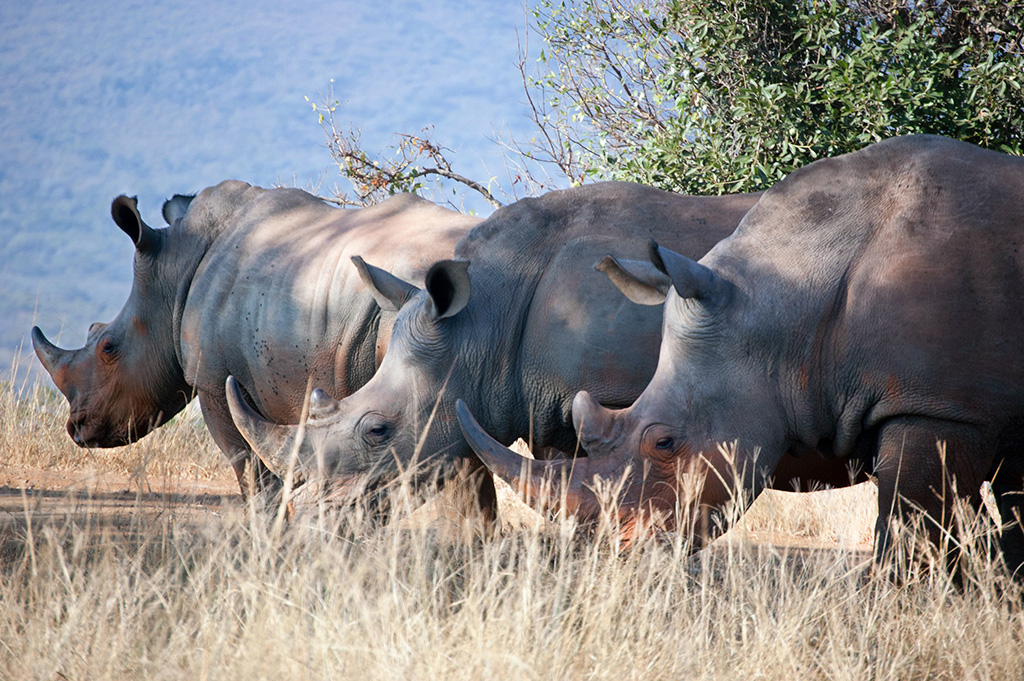
5. Amboseli National Park is another place where you can see the big bull elephants. It’s such a stunning park, with the savannah, the marshes and the bushveld, your typical African scene with Kilimanjaro in the background.

Photography: Supplied, Unsplash.com
ALSO READ
An oasis in the Klein Karoo and a different take on wildlife conservation









